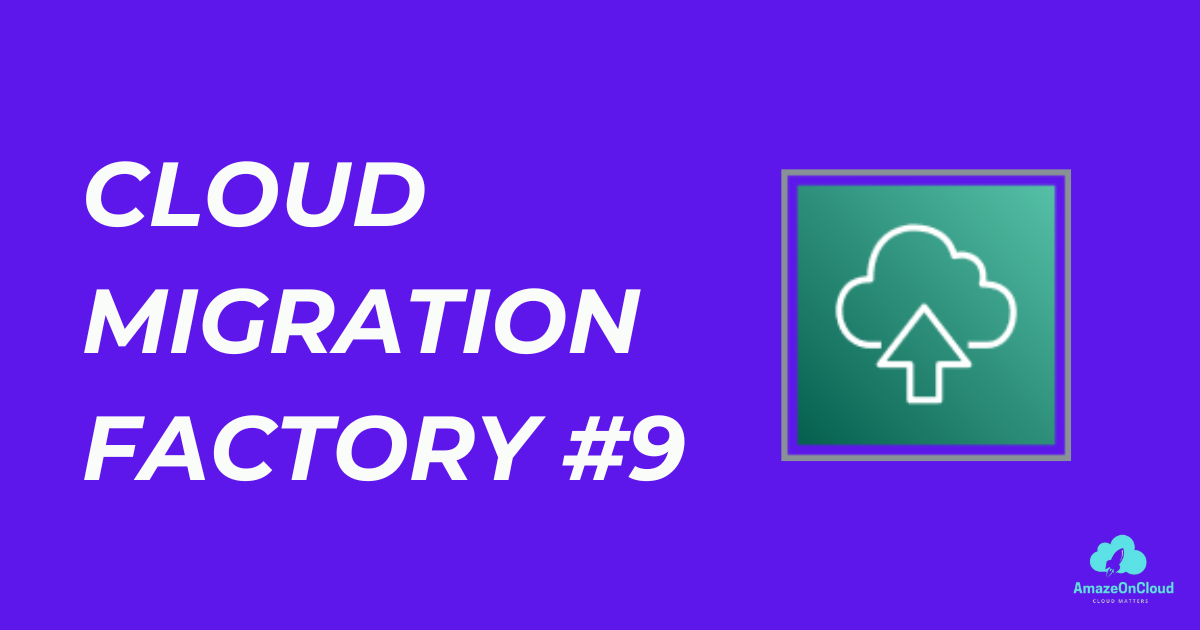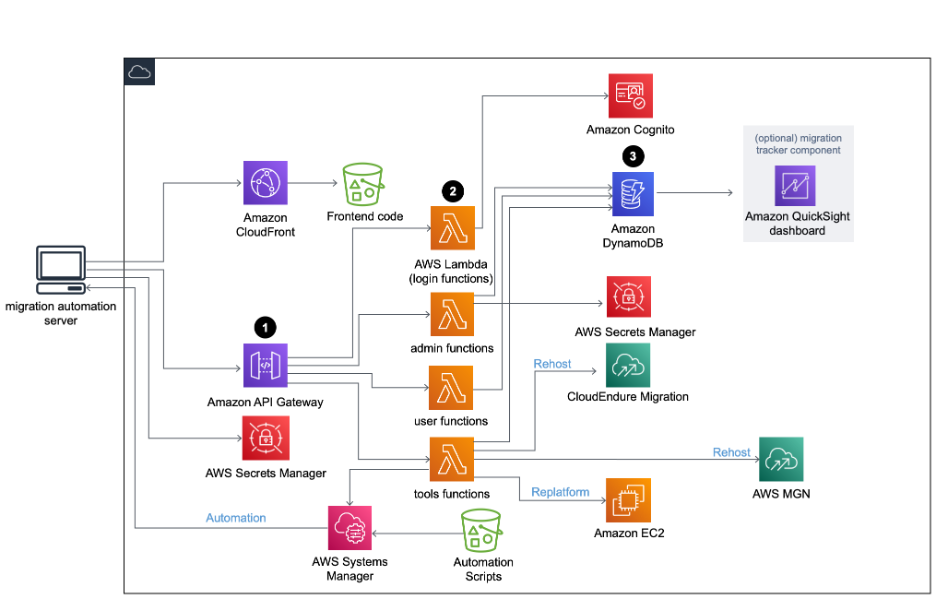Cloud Migration Factory on AWS #9
 Logeswaran
Logeswaran
Hello Cloud learners,
Introducing the 🏭 Cloud Migration Factory on AWS 💻
As more companies move to the cloud ☁️, performing large-scale cloud migrations can be challenging. That's why AWS introduced the Cloud Migration Factory - a reproducible cloud migration framework that helps enterprises migrate to the AWS cloud quickly and securely.
☁️ With Cloud Migration Factory on AWS, you can automate manual processes and efficiently integrate multiple migration tools to improve performance and prevent long cutover windows throughout the migration process. This is possible through this AWS Solution’s orchestration platform options. We recommend using AWS Application Migration Service (AWS MGN) to migrate your workloads to AWS at scale.
AWS Professional Services, AWS Partners, and other enterprises currently use this solution to automate migrations.
The acceleration of cloud adoption across industries has created an urgent need for scalable and repeatable cloud migration models. Recognizing this trend, Amazon Web Services (AWS) introduced the Cloud Migration Factory in 2021, providing enterprises with a structured path to migrate their legacy infrastructure and applications onto the AWS cloud.
The factory model incorporates AWS’ vast experience from conducting large-scale migrations and consolidates it into an optimized step-by-step migration process flow leveraging automation wherever possible.
In this technical post will provide an in-depth examination of the components encompassing AWS’s Cloud Migration Factory.
Technical Architecture
Let's explore technical guide of this service.

Step 1
Amazon API Gateway receives migration requests from the migration automation server through RestAPIs.
Step 2
AWS Lambda functions provide the necessary services for you to log in to the web interface, perform the necessary administrative functions to manage the migration, and connect to third-party APIs to automate the migration process.
The user Lambda function ingests the migration metadata into an Amazon DynamoDB table. Standard HTTP status codes are returned to you through the RestAPI from the API Gateway. An Amazon Cognito user pool is used for user authentication to the web interface and Rest APIs, and you can optionally configure it to authenticate against external Security Assertion Markup Language (SAML) identity providers.
Step 3
The migration metadata stored in DynamoDB is routed to the AWS MGN API to initiate a Rehost migration jobs and launch servers. If your migration pattern is Replatform to Amazon EC2, the tools Lambda function launches CloudFormation templates in the target AWS account to launch EC2 instances.
This solution also deploys an optional migration tracker component that tracks the progress of your migration. AWS Glue retrieves migration metadata from the Cloud Migration Factory DynamoDB table and exports the metadata to Amazon Simple Storage Service (S3). You can then create visualizations and build a dashboard to view the progress of the migration.
🤔 So what is the Cloud Migration Factory?
It is a proven, step-by-step migration framework encoded into AWS services like CloudEndure Migration and Application Discovery Service. The automated reference patterns get customers to the cloud faster.
👷♂️ The Migration Factory guides customers through the following key phases:
✔️ Application Discovery & Assessment
Using agent-less tools to gather configuration data from on-prem servers. This data allows for assessment of migration feasibility.
✔️ Migration Planning
Mapping dependencies between servers. Planning migration grouping, order, and validating target VPC environment.
✔️ Migration Execution
Leveraging CloudEndure to replicate servers continuously to AWS. Server consistency ensured during cut-over events.
✔️ Validation & Iteration
Post-migration validation scripts to ensure applications, data, and security controls are functioning per expectations.
📈 The Factory delivers measurable improvements in cloud migration including:
60% faster initial migration
55-75% reduced cost
99.9% uptime SLAs
The Cloud Migration Factory from AWS provides a framework to ensure efficient, secure and dependable migrations to the cloud!
Key Benefits of using this service
Migrate multiple servers to the AWS Cloud : Simplify, expedite, and reduce the cost of cloud migration through an automated lift-and-shift solution.
Automate small, manual tasks for large migrations : Automate the small, manual tasks inherent in large migrations, so you can migrate more quickly and efficiently and reduce the opportunity for human error.
Manage migrations using a web interface : Manage application and server schema definitions and update wave, application, and server metadata.
Monitor migration progress : See the progress of your migration with a migration tracker, and visualize migration metadata using Amazon QuickSight.
Official AWS Documentation page : https://aws.amazon.com/solutions/implementations/cloud-migration-factory-on-aws/?did=sl_card&trk=sl_card
In Summary, The AWS Cloud Migration Factory is a structured framework that provides guidance and automation to assist enterprises in migrating their on-premises applications to the AWS cloud quickly and securely.
It encodes AWS's learnings from thousands of migrations into a reproducible factory model comprised of four phases - application discovery and assessment, migration planning and design, migration execution, and validation/iteration.
Hope this post helps you to understand this service and connect with me on LinkedIn for more knowledge sharing updates.
Happy cloud journey !!!!
Subscribe to my newsletter
Read articles from Logeswaran directly inside your inbox. Subscribe to the newsletter, and don't miss out.
Written by

Logeswaran
Logeswaran
Curious to learn new things and cloud computing enthusiast.